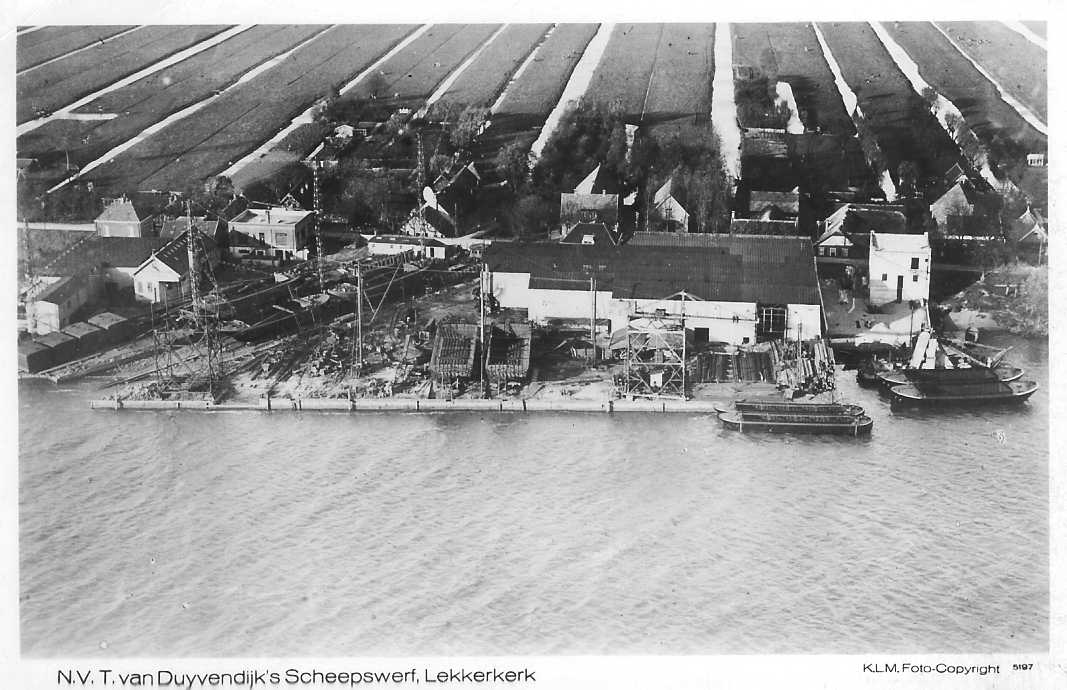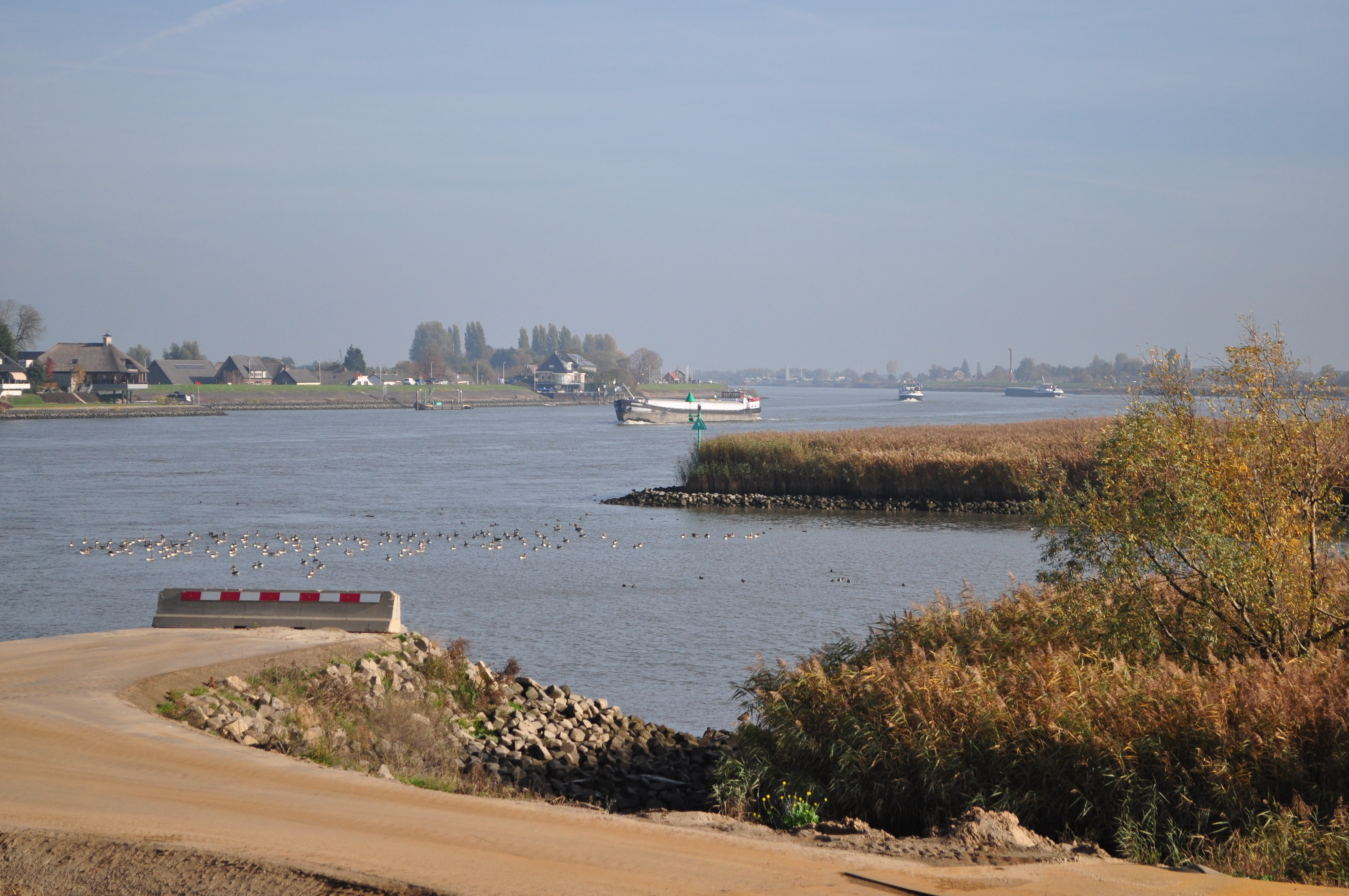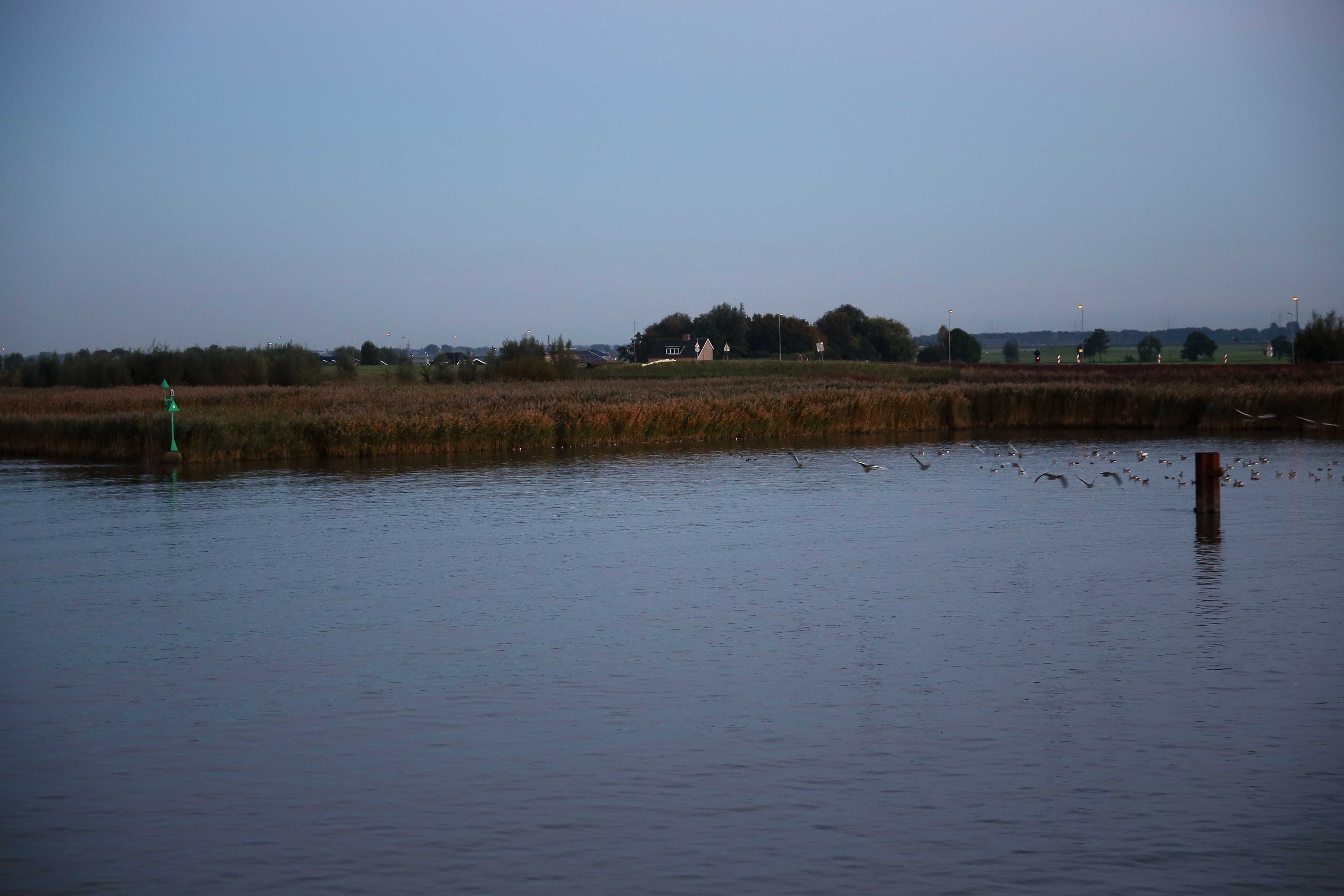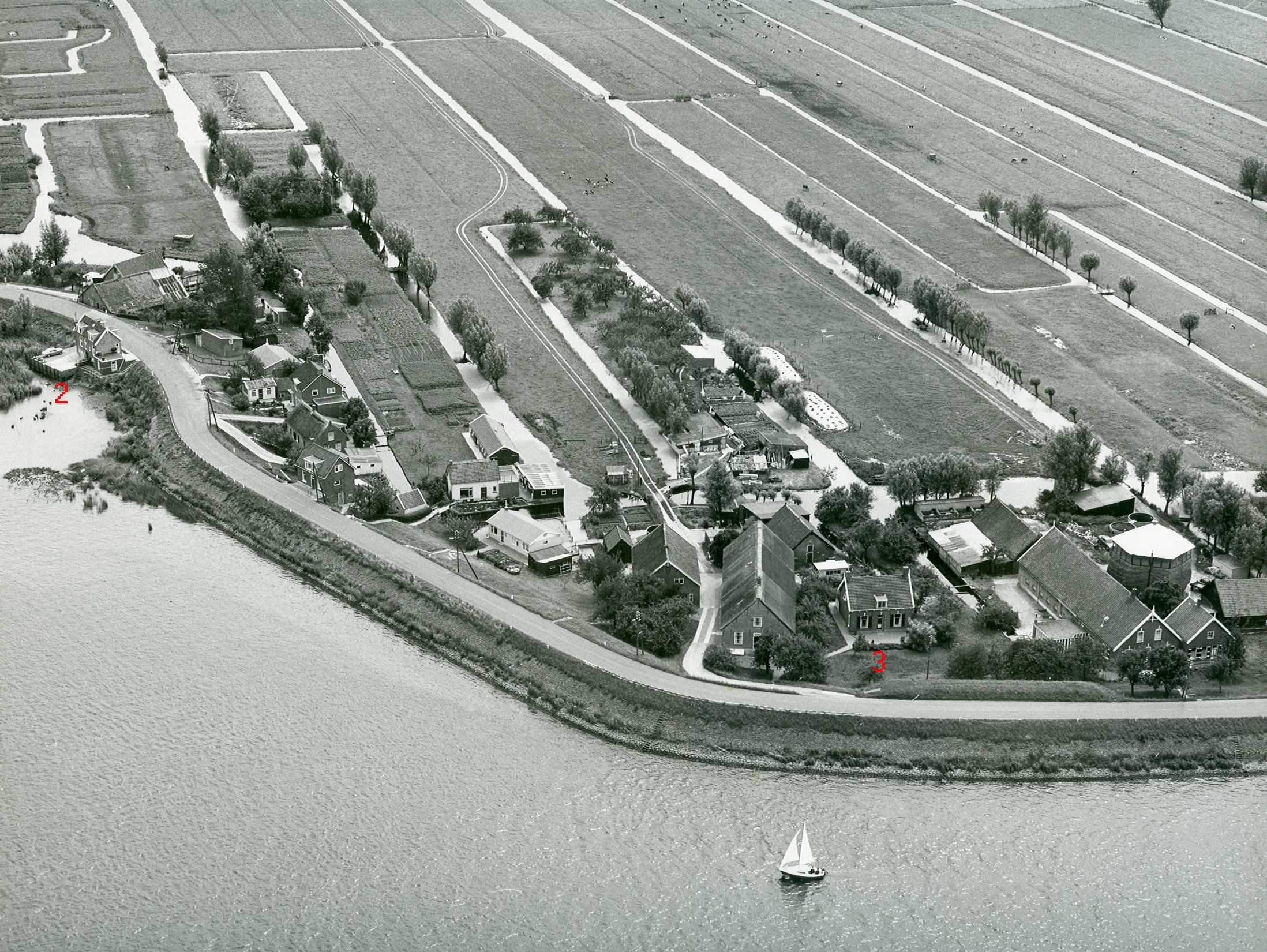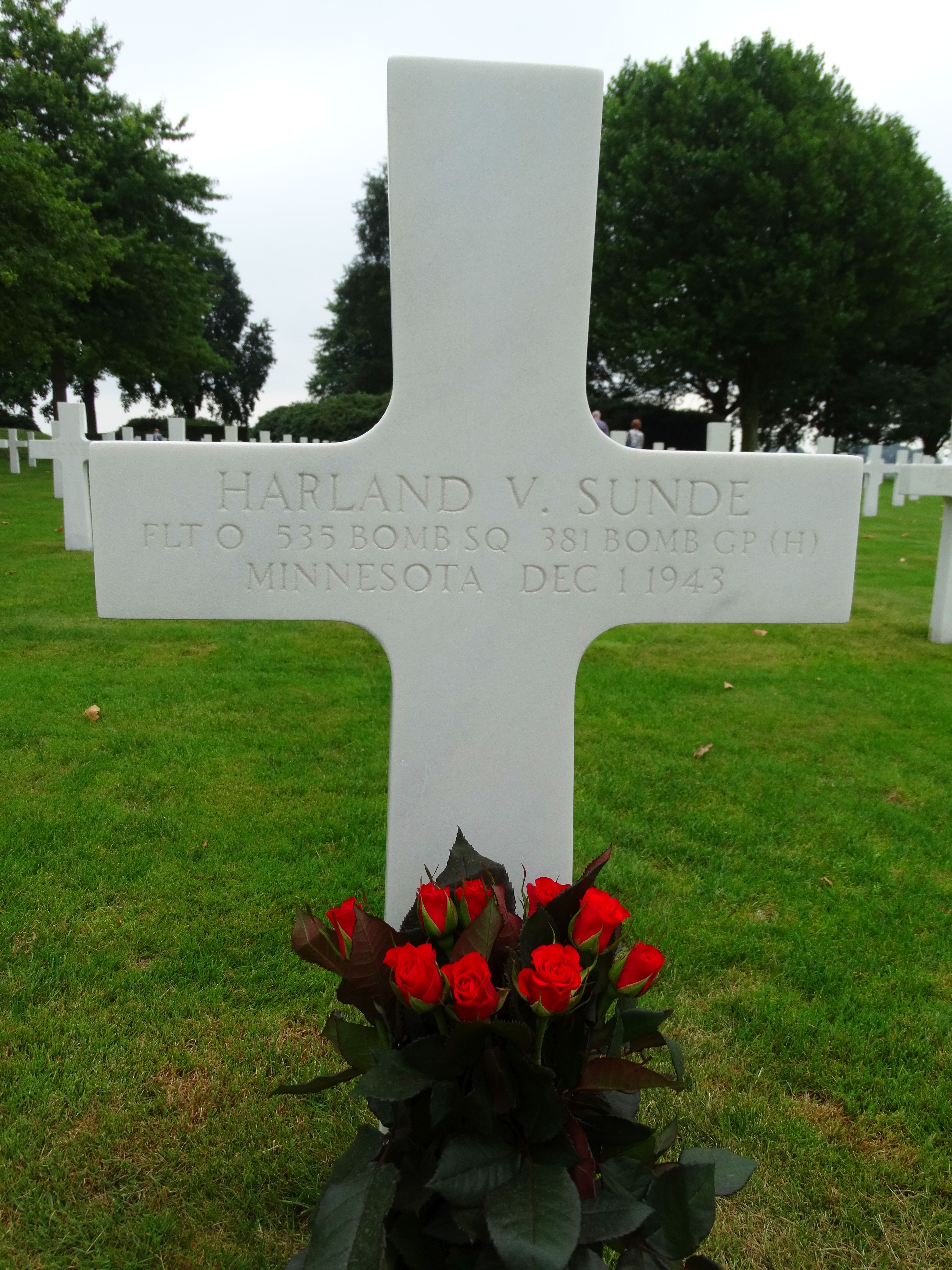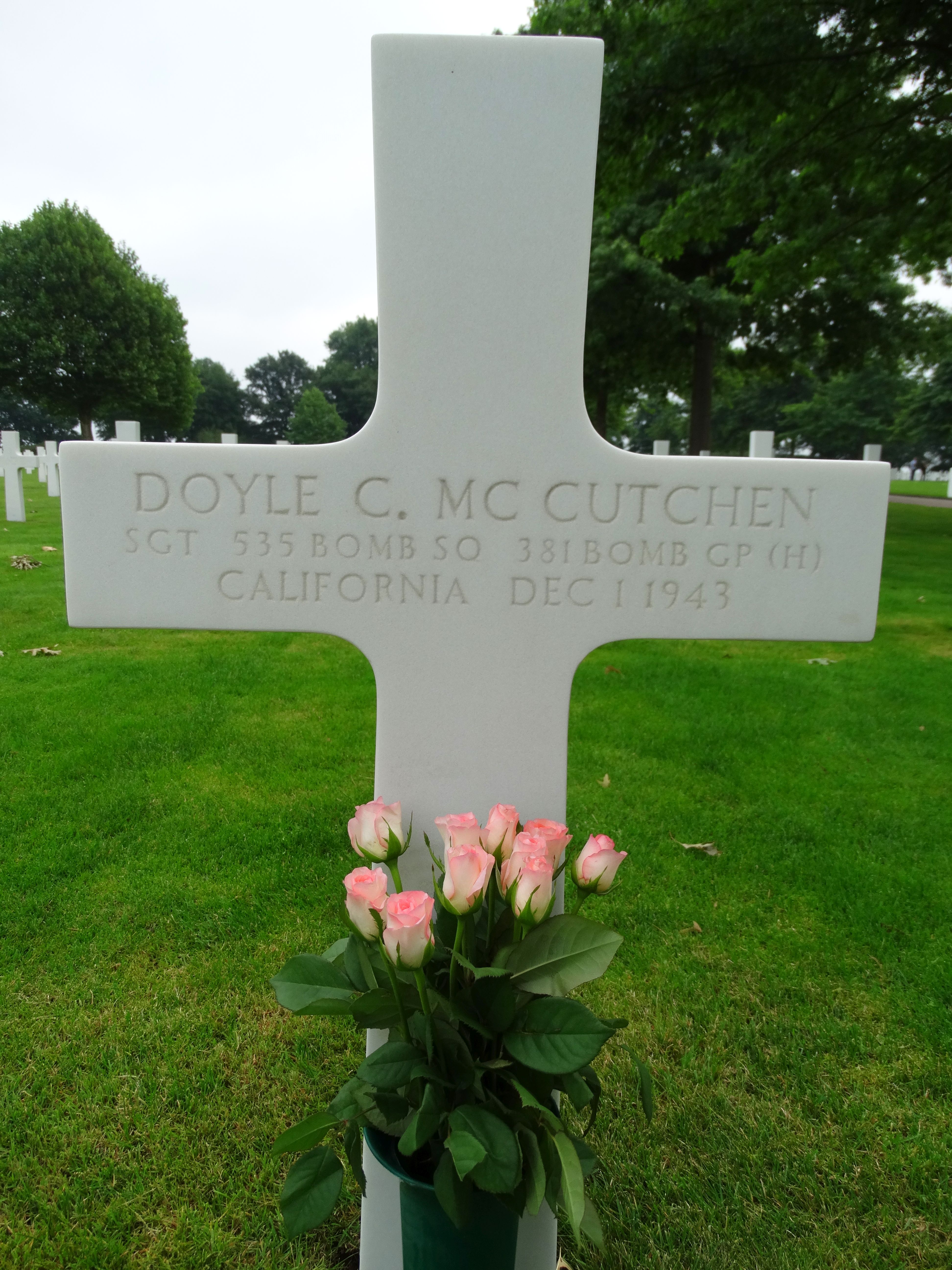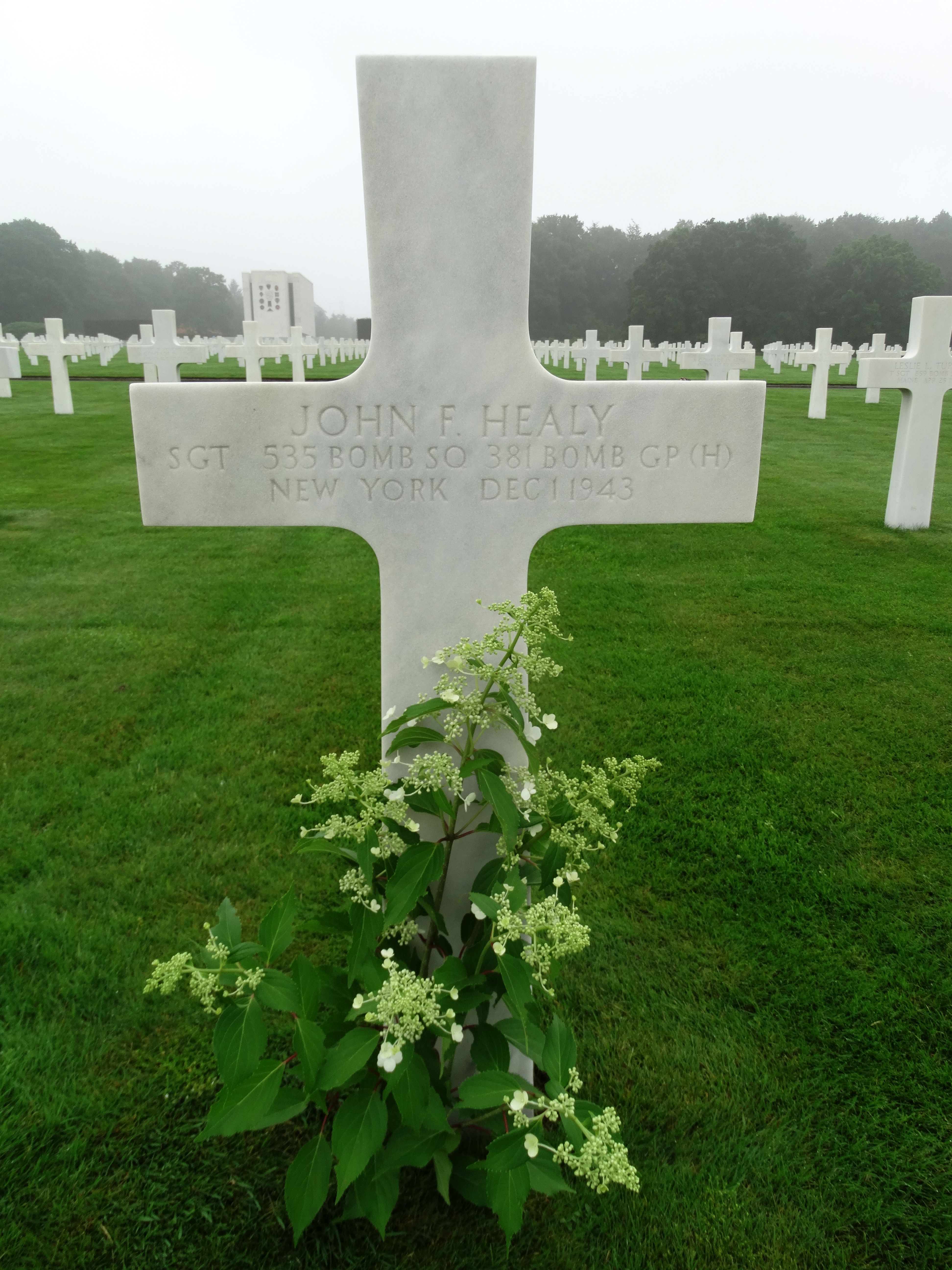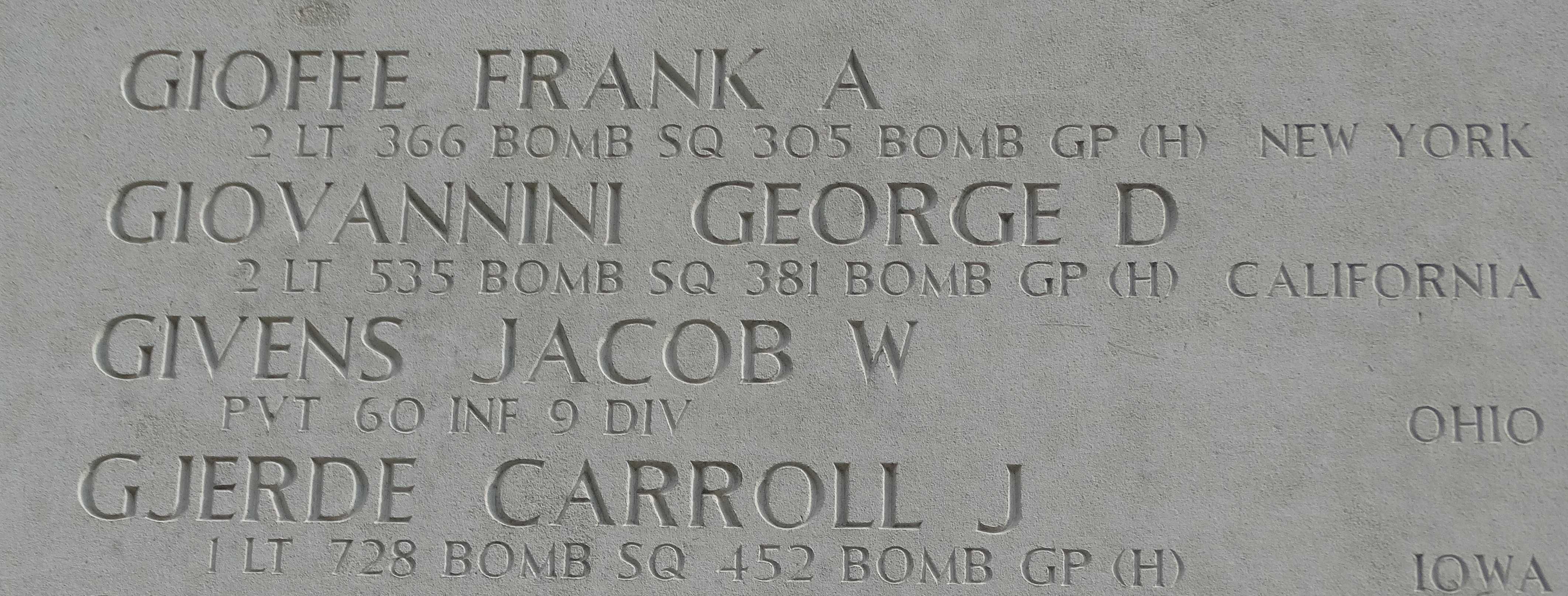The plane crashed into the Lek river at about one and a half mile from the border between the towns of Nieuw-Lekkerland and Streefkerk. While the crew-members tried to get to safety, other German fighters shot at them. That was only mentioned by some eye-witnesses, but the crew can't remember it.
Dirk Verheij from Nieuw-Lekkerland takes five men with his rowing boat from the water and brought them to the shore. Through the current he floats a little westwards and gets at the bank of the river near the former address 'Lekdijk 44'. The two other crew-members got saved by a man from Lekkerkerk with a rowing-boat that came from the hotel/restaurant ’de Groote Boer’ in that town.
A former man from Lekkerkerk, who now lives in Canada, Marinus van de Hoek from Opperduit, can still remember that he was walking to school when he saw the crew standing on the wings of the plane. Another man from Lekkerkerk, Anton den Ouden (12-3-1934) was fishing near the café 'Schoonzigt' when the B-17, followed by shooting German fighters, flew eastwards from him and crashed into the Lek river, in opposite of the shipyard van Duyvendijk.

Map from 1937, with the crashlocation of the Mission Belle in the center, where the red letters 'MB' are.
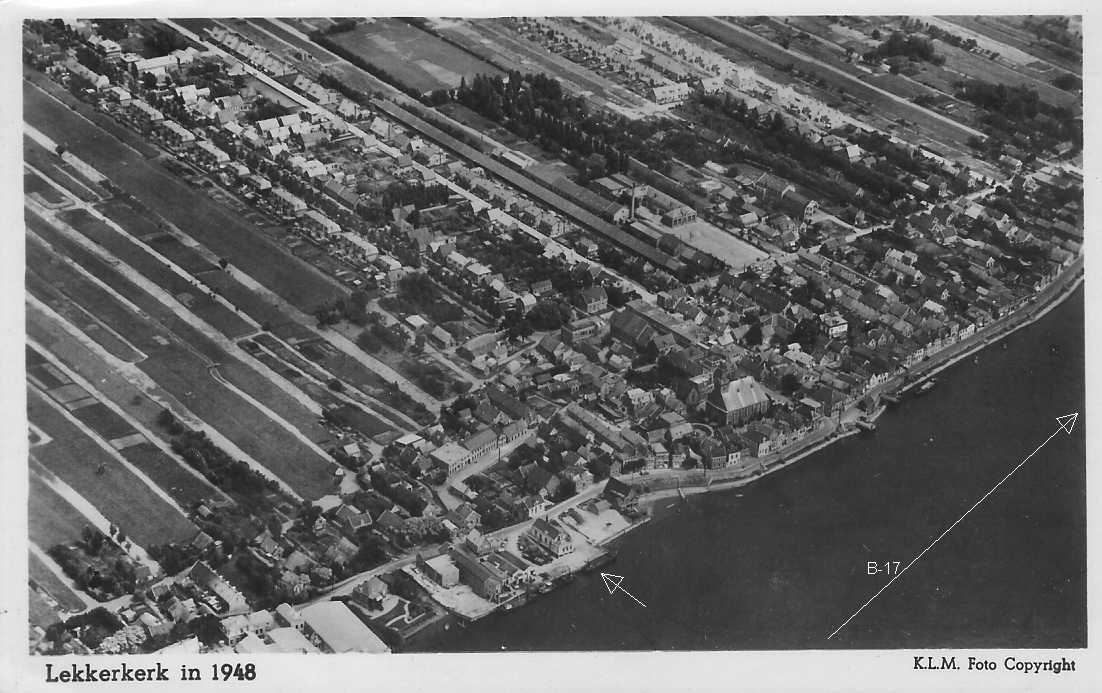
Postal card from 1948, with the Mission Belle route at the bottom right, where B-17 is mentioned and at the other arrow in the middle is the 'Schoonzicht' café.
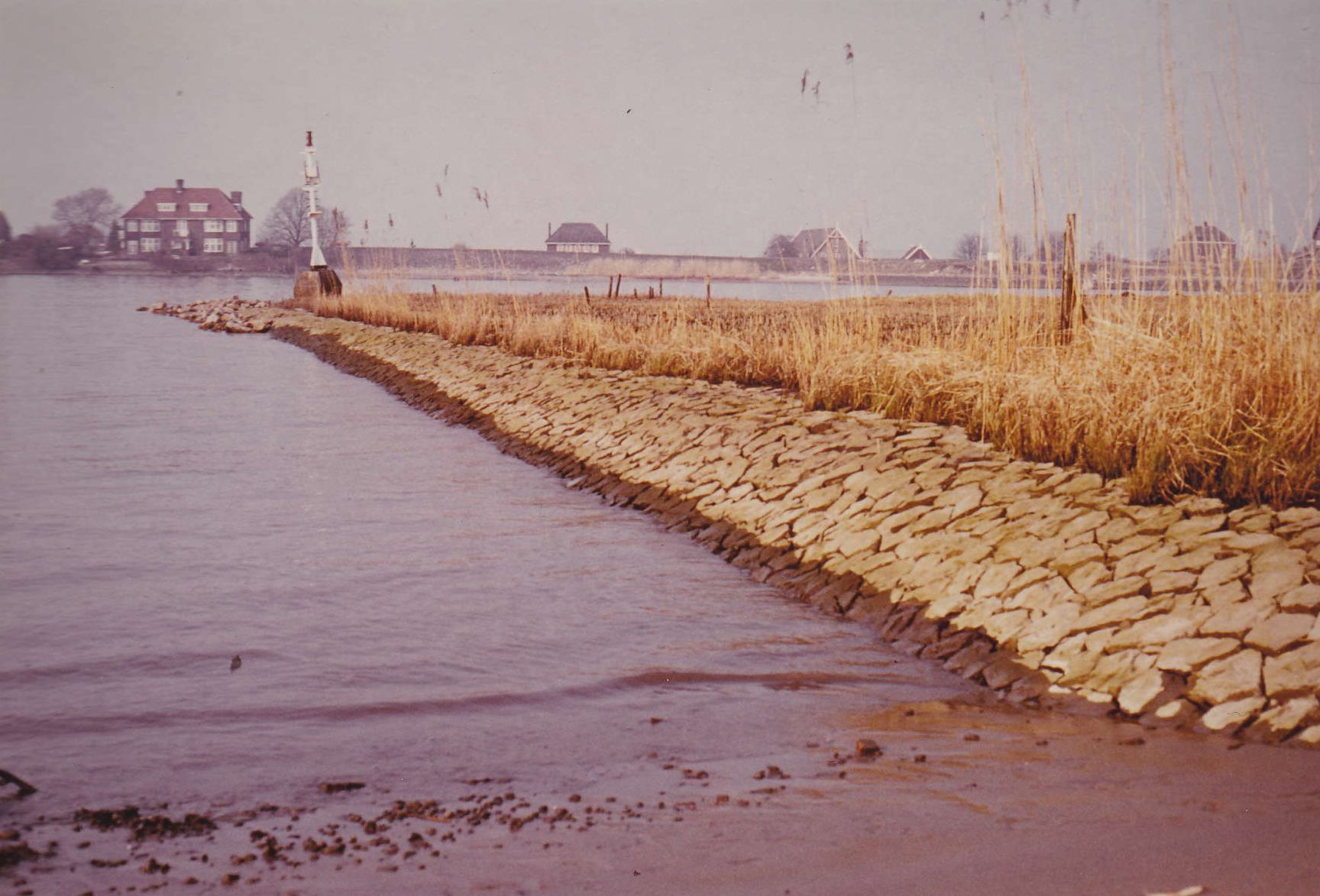
At the end, left of this jetty came the nose of the B-17 (photo taken by A. Korpel).
Below a postal card with the van Duyvendijk shipyard on it, on the opposite side of the Lek river. It's at the right top side of the picture above where you can see a house behind the reed shrubs.
